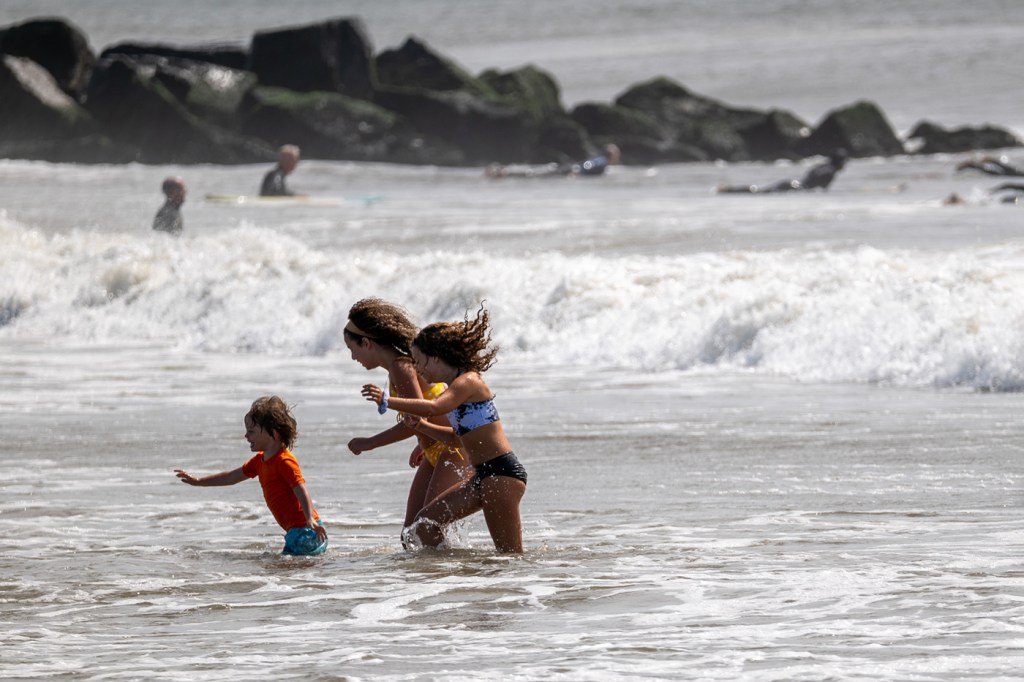What is a rip current, and how can you survive if you get caught in one?
Nineteen people have died at beaches in the U.S. this year from rip currents. Northeastern experts offer rip current survival tips.

Going into the ocean is not always the safest endeavor. While many people fear sharks and other creatures that lurk beneath the waves, they’re more at risk of falling victim to a rip current.
These powerful events have caused 19 deaths at U.S. beaches this year, according to the National Weather Service.
“The stronger the current, the more dangerous it’ll be,” said Cristina Schultz, Foley Family assistant professor in marine and environmental sciences at Northeastern University.
According to Dalton Sasaki, an oceanographer and postdoctoral research associate at Northeastern, rip currents are created by iterations of waves breaking near the shore line. The differing heights of these waves means they don’t all have the same distribution of water. Near the coast this can cause a buildup, which then streams back into the ocean, often in one particular point, creating a powerful rip current.
Featured Posts
“Rip currents are perpendicular to the topography,” Sasaki said. “They go in the offshore direction. They are generated by interactions of the waves.”
Rip currents occur at many beaches across the United States.
“They’re really hard to predict, because they’re not going to be the same thing for every beach,” Schultz said.
Sasaki said that while there’s no definitive way to predict where rip currents will occur, they are common in areas with man-made structures that interfere with the tide, as well as on the West Coast, which has more underwater canyons.
Some rip currents are readily identifiable, Sasaki said. A darker patch of brown, sandy water with no waves breaking or foam or dark water running across the surf zone is an indicator that there might be a rip current present. But there are less powerful ones that don’t have these telltale signs, but can still carry a person away from the shore if they get caught in them.
If you do get caught in a rip current, the best thing to do is to avoid swimming straight back to shore, said Steve Vollmer, director and associate professor of marine and environmental sciences at Northeastern University, who worked as a professional lifeguard for Huntington City Beach.
“The primary issue with the rip current is when people get caught in the current, they feel themselves getting pulled out to sea,” Vollmer added. “They panic and they swim straight back to shore which is like swimming against the flow of a river and panic is what causes people to drown.”
The better course of action to save your life if stuck in a rip current is to ride the current out to sea and then call for help, Vollmer said. You can also swim sideways out of the current and to shore, but this will only work for strong swimmers.
“The best prevention is to not get caught in a rip current at all,” Vollmer said.
Many people’s first instinct if they see someone else caught in a rip current is to try to rescue them, but Vollmer said this is also the wrong route. Without a floatation device, the person you’re trying to rescue could easily pull you into the current alongside them.
To avoid rip currents, Vollmer said swimmers should stay in water no higher than their waist.
“If there’s strong currents, you can quickly get taken above your chest and be swimming and not be able to swim out,” he added. “Even as a strong swimmer, it’s hard to rescue somebody without any equipment. So prevention is definitely the best way to go.”











